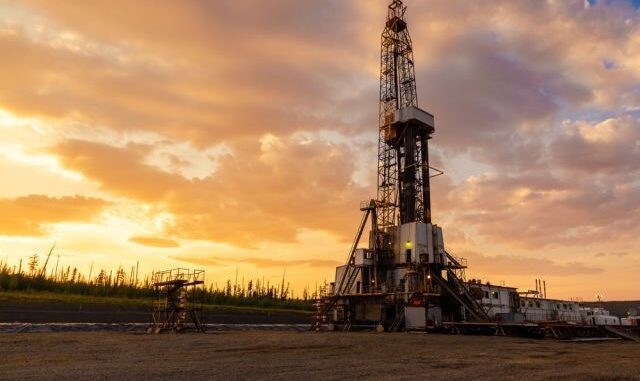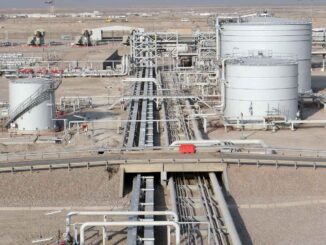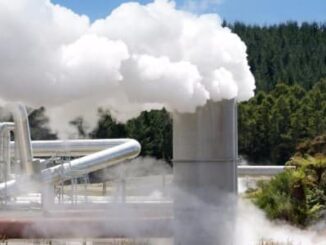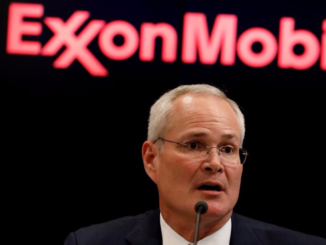
In a testament to operational excellence, Chevron Corporation (CVX) has achieved record-breaking oil and gas production in the second quarter of 2025, positively influencing its earnings despite headwinds from lower commodity prices. This milestone underscores the resilience of traditional energy giants in a volatile market while highlighting key considerations for investors evaluating shareholder returns across the energy sector.
Chevron’s Q2 2025 Earnings Highlights
Chevron reported earnings of $2.5 billion, or $1.45 per diluted share, for Q2 2025, a decline from $4.4 billion ($2.43 per share) in the same period last year.
Adjusted earnings, which exclude one-time items, came in at $3.1 billion ($1.77 per share), down from $4.7 billion in Q2 2024.
Are you from California or New York and need a tax break?
While these figures reflect a year-over-year drop primarily due to softer crude oil prices and reduced affiliate income, the company’s upstream segment benefited significantly from higher production volumes. The standout achievement was Chevron’s record worldwide and U.S. net oil-equivalent production, which set new quarterly highs.
In the Permian Basin alone, output reached 1 million barrels of oil equivalent per day (boe/d), marking a 123,000 boe/d increase from Q2 2024, driven by enhanced efficiencies and expanded operations in key U.S. basins like the Permian and Gulf of Mexico.
This surge in output helped offset the impact of lower liquids realizations, which contributed to a 39% drop in upstream profits to $2.7 billion.
Despite the earnings dip, Chevron generated robust cash flow from operations at $8.6 billion, up from $6.3 billion a year ago, enabling strong free cash flow of $4.9 billion.
Capital expenditures were managed at $3.7 billion, slightly lower than the prior year, reflecting disciplined spending amid market uncertainties.
Looking ahead, Chevron’s recent acquisition of Hess Corporation, completed in July 2025, is poised to further bolster its portfolio with high-quality assets in Guyana, the U.S. Bakken, and the Gulf of Mexico, potentially driving production and free cash flow growth into the next decade.
Shareholder Returns: A Priority for Chevron
Chevron continued its commitment to rewarding investors, returning $5.5 billion to shareholders in Q2 2025 through $2.9 billion in dividends and $2.6 billion in share repurchases.
This marks the 13th consecutive quarter of distributions exceeding $5 billion, demonstrating the company’s focus on capital returns even in a lower-price environment.
The board declared a quarterly dividend of $1.71 per share, payable in September 2025, maintaining Chevron’s status as a reliable income generator for investors.
Investor Considerations: Oil and Gas vs. Wind and Solar on Buybacks, Earnings, and Dividends
For investors navigating the energy landscape, Chevron’s performance invites a broader comparison between traditional oil and gas companies and the burgeoning wind and solar sectors, particularly in terms of earnings stability, share buybacks, and dividend payouts. Oil and gas majors like Chevron, ExxonMobil, and ConocoPhillips have historically leveraged mature operations and high cash flows to deliver substantial returns to shareholders, often through aggressive buyback programs and dividends. In contrast, many wind and solar companies prioritize reinvestment in growth and technology, resulting in lower or absent dividends.
Key Metrics for Oil and Gas Companies
Oil and gas firms have seen a surge in shareholder payouts, fueled by elevated commodity prices in recent years. In 2024, the “Big Oil” supermajors— including Chevron, ExxonMobil, Shell, BP, TotalEnergies, and Eni—distributed a record $119 billion to shareholders via dividends and buybacks, representing a 56% payout ratio of cash flows.
This marked an increase from the typical 30-40% range seen between 2012 and 2022.
However, with crude prices dropping over 12% year-to-date in 2025 amid demand concerns, analysts warn that buybacks—the more flexible component—could face cuts to preserve balance sheets.
For instance, BP reduced its buybacks from $1.75 billion to $750 million in early 2025 due to lower cash flows.
Investors should focus on:Earnings Resilience: Oil and gas companies benefit from diversified portfolios and hedging strategies. Chevron’s record output mitigated price declines, supporting adjusted earnings above Wall Street expectations of $1.70 per share.
Share Buybacks: These reduce outstanding shares, boosting earnings per share. Chevron’s $2.6 billion in Q2 repurchases exemplify this, with Big Oil potentially distributing over 80% of cash flows in 2025 if trends hold.
|
Company
|
Q2 2025 Buybacks/Dividends
|
Yield (Approx.)
|
Growth Target
|
|---|---|---|---|
|
Chevron
|
$2.6B buybacks / $2.9B dividends
|
~4%
|
Stable increases
|
|
ExxonMobil
|
Ongoing program
|
~3.5%
|
Consistent hikes
|
|
ConocoPhillips
|
Variable + fixed
|
~2.5%
|
Top 25% S&P growth
|
Dividends: High yields are common, with Chevron offering stability through its Dividend Aristocrat status. Other examples include ConocoPhillips aiming for top-25% dividend growth in the S&P 500 and Energy Transfer targeting 3-5% annual increases with a yield over 7%.
Wind and Solar: Growth Over Immediate Returns
The wind and solar industries, while expanding rapidly, often do not prioritize dividends or buybacks to the same extent, as profits are reinvested into capacity expansion and innovation. Pure-play developers like First Solar (FSLR) and Enphase Energy (ENPH) typically forgo dividends to fund growth, with many reporting limited free cash flow for payouts.
However, established players and yield-focused entities (yieldcos) do offer dividends. For example, NextEra Energy (NEE), the world’s largest wind and solar producer, provides a dividend with growth expectations, supported by its utility arm.
Brookfield Renewable (BEP) targets 5-9% annual dividend growth, yielding around 5%, backed by inflation-linked power purchase agreements and project pipelines.
Clearway Energy (CWEN) and Hannon Armstrong Sustainable Infrastructure (HASI) focus on dividends as infrastructure plays, with yields often exceeding 4%.
Despite these, the sector’s overall payout ratios are lower, with many companies emphasizing long-term capital appreciation over immediate income. Investors should weigh:Earnings Volatility: Renewables face intermittency and policy risks, but benefit from falling costs and demand growth, projected at 9% annually for solar through 2030.
Buybacks: Rare, as capital is directed toward new projects rather than share reductions.
Dividends: Selective; growth-oriented firms avoid them, while utilities like NextEra offer stability but lower yields compared to oil majors during high-price cycles.
|
Company/Type
|
Dividend Yield (Approx.)
|
Buybacks
|
Focus
|
|---|---|---|---|
|
NextEra Energy
|
~2.5%
|
Limited
|
Growth + Income
|
|
Brookfield Renewable
|
~5%
|
Occasional
|
5-9% growth
|
|
Pure-Play Developers (e.g., First Solar)
|
None
|
None
|
Reinvestment
|
The Bottom Line
In summary, oil and gas companies like Chevron offer more immediate and substantial returns through buybacks and dividends, supported by mature cash flows, making them attractive to income-focused investors.
Additionally, one advantage the United States has in terms of oil and gas resilience in the market is the ability to collect royalties and make tax-preferred investments in private drilling operations. The United States is the leading oil producer for a reason: it can generate significant revenue through tax savings investments, which provides a huge competitive edge for the future of energy dominance.
Wind and solar, while not universally dividend-free, often lag in payouts due to reinvestments in growth, appealing more to those betting on the energy transition.
As markets evolve, balancing portfolio exposure between these subsectors could optimize for both yield and appreciation.
Is Oil & Gas Right for Your Portfolio?
Crude Oil, LNG, Jet Fuel price quote
ENB Top News
ENB
Energy Dashboard
ENB Podcast
ENB Substack






